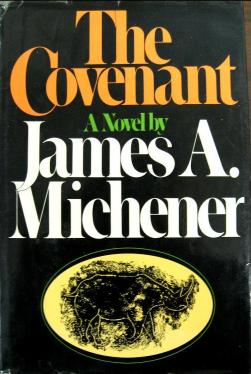
The very first modern humans are believed to have inhabited South Africa more than 100,000 years ago. In 1999, Unesco designated the region the Cradle of Humankind World Heritage site. South Africa's first known inhabitants have been referred to as the Khoisan, the Khwe and the San. Starting in about 1,000 BCE, these groups were then joined by the Bantu tribes who migrated from Western and Central Africa during what is known as the Bantu expansion.

The Boeremag is the name by which a group of men convicted of treason in South Africa is commonly known as. The South African government described them as a South African right-wing terrorist organization with white separatist aims. The Boeremag were accused of planning to overthrow the ruling African National Congress government and to reinstate a new Boer-administered republic reminiscent of the era when Boers administered independent republics during the 19th century following the Great Trek.

uMkhonto we Sizwe ( was the paramilitary wing of the African National Congress, and was founded by Nelson Mandela in the wake of the Sharpeville massacre. Its mission was to fight against the South African government.

The Afrikaner Weerstandsbeweging, meaning "Afrikaner Resistance Movement", commonly known by its abbreviation AWB, is an Afrikaner nationalist, neo-Nazi political party in South Africa. Since its founding in 1973 by Eugène Terre'Blanche and six other far-right Afrikaners, it has been dedicated to secessionist Afrikaner nationalism and the creation of an independent Boer-Afrikaner republic or "Volkstaat/Boerestaat" in part of South Africa. During bilateral negotiations to end apartheid in the early 1990s, the organisation terrorised and killed black South Africans.

Eugène Ney Terre'Blanche was an Afrikaner nationalist who founded and led the Afrikaner Weerstandsbeweging. Prior to founding the AWB, he served as a South African Police officer, was a farmer, and was an unsuccessful Herstigte Nasionale Party candidate for local office in the Transvaal. He was a major figure in the right-wing backlash against the collapse of apartheid. His beliefs and philosophy have continued to be influential amongst white supremacists in South Africa and across the world.

Christiaan Frederick Beyers Naudé was a South African Afrikaner Calvinist Dominee, theologian and the leading Afrikaner anti-apartheid activist. He was known simply as Beyers Naudé, or more colloquially, Oom Bey.
The following lists events that happened during 1989 in South Africa.
The following lists events that happened during 1988 in South Africa.
The following lists events that happened during 1986 in South Africa.
The following lists events that happened during 1987 in South Africa.

General Constand Laubscher Viljoen was a South African military commander and politician. He co-founded the Afrikaner Volksfront and later founded the Freedom Front. He is partly credited with having prevented the outbreak of armed violence by disaffected white South Africans prior to post-apartheid general elections.

The Covenant is a historical novel by American author James A. Michener, published in 1980.

The 2005 Delhi bombings occurred on 29 October 2005 in Delhi, India, killing 62 people and injuring at least 210 others in three explosions. The bombings came only two days before the important festival of Diwali, which is celebrated by Hindus, Sikhs, and Jains. The bombs were triggered in two markets in central and south Delhi and in a bus south of the city. The Pakistani Islamist terrorist group Lashkar-e-Taiba claimed responsibility for the attacks under the pseudonym of Islamic Inquilab Mahaz. The Indian Mujahideen is also suspected of involvement.

A Volkstaat, also called a Boerestaat, is a proposed white ethnostate intended to serve as a Afrikaner homeland within the borders of South Africa, most commonly proposed as a fully independent Boer/Afrikaner nation. The proposed ethnostate would bar Afrikaans-speaking Coloureds but accept South Africans of English ancestry and other White South Africans, if they accept Afrikaner culture and customs.

Fo Guang Shan Nan Hua Temple is the largest Buddhist temple and seminary in Africa, and is situated in the Cultura Park suburb of Bronkhorstspruit, South Africa. It is the African headquarters of the Fo Guang Shan Order, covering over 600 acres (2.4 km2). Fo Guang Shan was established in 1967 by Venerable Master Hsing Yun, and is a Mahayana Chinese Buddhism monastic order. The Temple, like its mother order in Taiwan, follows the Linji Chan school of Buddhism as well as the Pure Land School.
Terrorism in South Africa has not been seen as a significant threat to the security of the state since the end of apartheid.

Internal resistance to apartheid in South Africa originated from several independent sectors of South African society and took forms ranging from social movements and passive resistance to guerrilla warfare. Mass action against the ruling National Party (NP) government, coupled with South Africa's growing international isolation and economic sanctions, were instrumental in leading to negotiations to end apartheid, which began formally in 1990 and ended with South Africa's first multiracial elections under a universal franchise in 1994.

Melanie Verwoerd is a South African and Irish political analyst and diplomat. She was previously a politician, ambassador, and the director of UNICEF Ireland.
Boerehaat is an Afrikaans word that means "ethnic hatred of Boers" or Afrikaners as they became known after the Second Boer War. The related term Boerehater has been used to describe a person who hates, prejudices or criticises Boers or Afrikaners.
"Dubul' ibhunu", translated as shoot the Boer, as kill the Boer or as kill the farmer, is a controversial anti-apartheid South African song. It is sung in Xhosa or Zulu. The song originates in the struggle against apartheid when it was first sung to protest the Afrikaner dominated apartheid government of South Africa.












